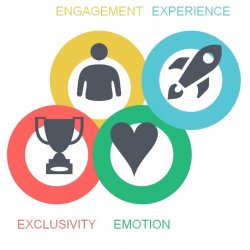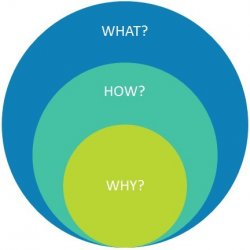9 Thoughts About the Future of Marketing
Table of contents
Apart from having creative and analytical minds, marketers have to always be up-to-date with constantly changing marketing landscape. If you run a business, you have a hard nut to crack as well. Getting across to today’s consumer is a complex process that requires adjusting your efforts to emerging trends. Being first, or at least one of the first, gives a competitive advantage. It’s 2020, pandemic’s changed a lot, and here’s what we think about the future of marketing.
Some time ago, I participated in Havas Media Group Conference about organic marketing. It was a one-day event with loads of substantive knowledge, inspirational ideas and valuable insights about today’s marketing. It gave me a new perspective on things.
At the same time, the world is drastically changing. Technology, socio-economics, the environment, climate, or the pandemia we’re currently in, influence consumer habits and, consequently, marketing strategy.
Here’s what I think about the near future of marketing.
Consumer of tomorrow: Generation Alpha
Millennials are nothing new and so is Gen Z. If you’re curious about the consumer of tomorrow, you should keep your eye on Generation Alpha.
Who are are they?
“(Generation Alpha) will be the most formally educated generation ever, the most technology-supplied generation ever, and globally the wealthiest generation ever,” says Mark McCrindle, who researched and confined the name for the generation born between 2010 and 2025.
Surely, generation Alpha is the first generation completely born into technology. Being exposed to technology during formative years will probably result in their digital literacy, high expectations for gamification, shorter attention spans, and who knows what else.
Also known as Generation Glass, they’re expected to prefer the virtual reality world to the real one. Technology at their disposal will become the extension of themselves. With technological advancements such as AI, self-driving cars, and other solutions that facilitate existence at their disposal, Generation Alpha is said to pay an even greater attention to self care: mental wellbeing, interests, and other shades of personal development.
Given the fact that the oldest Alphas are 9 years old, it’s still too early to draw any reliable and long-term predictions about their consumer behavior.
Generation Alpha marketing is already happening.
Ryan of Ryan ToysReview has been reviewing toys on YouTube since the age of 4. He’s gathered 18 million subscribers what makes him a great influencer and partner for brands marketing to Generation Alpha.
How Generation Alpha will evolve? Only time will tell.
Use media monitoring tool Brand24, and get to know your consumers better!
Forget 4Ps, welcome 4Es
It’s not something you want to hear if you spent years on learning all marketing theories which used to help you build value proposition. They are not valid anymore. Famous Product, Price, Place, Promotion from Marketing Mix are not effective anymore.
OK, so what do we have instead 4Ps now? Welcome 4Es – the new approach to customer value proposition, which embodies Engagement, Experience, Exclusivity and Emotion.

People don’t buy only products.
They buy experiences and emotions instead. You should change thinking “what should I sell” or “how should I sell” to “WHY should I sell it?”. Emotional branding is what makes a business stand out.

The most successful brands don’t offer just physical products or services, but great experiences, emotions, and a story that resonates. Disneyland or Coca-cola sell happiness, Adidas or Nike give you a courage to follow your dreams, L’Oréal sells beauty, and Apple sells a challenge to the status quo.
To embrace the concept of what, how and why, and stand out more, you can check Simon Sinek’s book titled Start with why.
This is how Coca-Cola speaks to its audience. Their value proposition is richer than just a can of soda – it’s happines.
Artificial intelligence, duh
AI has already been here for while. Marketers deal with it on a daily basis in various tools they use, be it for email marketing, content, or analytics. AI is an inherent part of engines that run these tools, decide, filter, and suggest solutions.
At the same time, consumers are more and more presented with proactive, AI-driven solutions in conversational interfaces which help, guide, remind, and present them with personalized solutions, or products. It’s common knowledge these days.
While chatbots have been with us for while now, we’re already seeing another emerging trend of voice assistants and voice interactions. At the moment, we’re familiar with Google Assistant, Siri, or Amazon Echo that help us run daily chores. It seems that voice interactions will soon step into business and help us navigate through menus, get familiar with FAQs, help or simply manage a service.
Then, the arms race will get down to whose AI solutions will bond best with the consumer.
The thing about AI in marketing strategies moving forward is that its development is a natural course of action. It’s not only because consumers expect more personalized and convenient experiences, but also because AI is the only and the most effective tool to gather information about customers.
If you want to stay up to date with AI in marketing, you should familiarize yourself with a term called martech. Martech refers to the connection between marketing and technology. In the face of technological development, the role of marketers, apart from the creative one, will require the knowledge and command of tools, most likely, AI-fueled tools.
Most consumers wouldn’t care if 73% of brands disappeared for good
I know it might be a hard to acknowledge, but that’s what research shows: most of consumers won’t bother if a brand stops existing tomorrow and it concerns nearly three quarters of all brands.
If unhappy at some point, consumers easily turn to another brand. After all, there’s a full panoply of distinct manufacturers, brands, and services that coexist, and can fill the gaps others miss out on.

Why are consumers so apt to change their choices?
Consumers these days expect brands to respond do their emotional needs, contribute to local and international communities, stand for a cause, and support great ideas.
Brands should not only reach us on a deeper, emotional level, but also ensure that every step of consumer experience is alike unique, including the most important part of it – the product.
The concepts of brand, its stories and values are important and matter during the acquisition and consideration phase.
At the end of the day, its the product that matters most. Great stories, causes, and values won’t buy someone into a poor product. When a product falls short of expectations, consumers choose a better option without a blink of an eye.
Sorry!
Digital media monitoring and analytics the goldmine of insights
Whether it’s tombstone carving, electronics, or web applications, every single business needs to hone its online presence these days.
There’a a number of businesses that operate mostly online and whose customers are online as well. It means that the majority of conversations about their brands and products happen online.
Consumers discuss brands and products in social media, industry experts and news sites publish reviews, competitors post latest product updates. Online buzz is a source of business intelligence which already is out there, online.
Online buzz about business-related topics provide insights that can help businesses improve strategy, brand reputation management, competitor analysis, market research, customer feedback, consumer research, influencer marketing, product design, or trend forecasting.
And this is where media monitoring and analytics come in as the way to collect and analyze all this information. Media monitoring tools aggregate all publicly available content that contains predefined keywords. They scan in real time websites, blogs, discussion forums, review sites, in social media, podcasts, or newsletters.
Set up a media monitoring tool and track what consumers are saying about your brand & product!
Media monitoring and analytics tools have a heap of analytical functions to help you make sense out of the data. It’s the ultimate tool to understand what online buzz says about businesses, products, services, competitors, trends, and consumers.
Given the fact that more and more businesses, particularly during the pandemia, move to the Internet, media monitoring will become invaluable.
Build intimate one-to-one relations
One-to-many marketing model used to work very well in the past. The process was easy. Marketers did an in-depth research about target group, defining a persona and its basic characteristics. Then they developed a communication style and messages to send to the target group. Conversion rates maybe were not impressive, but the model worked.
With the digital media growth this model evolved slightly. The Internet let us gather basic information about users and marketing teams could then target their message to narrow groups of people with similar interests, demographics and habits. It is more accurate way to reach out to consumers, however not as effective as it used to be a few years ago.
Cloud computing revolutionized marketing communication. Nowadays, data lets us collect detailed information about consumer behavior, their preferences and interests. You can leverage it to create personalized marketing messages to individuals.
However, if you want to distinguish your brand among others and make clients loyal you should take a step further.
Today’s consumers need individual service and personal approach in every aspect. They can appreciate when a brand goes the extra mile in customer service. Showing your clients that you care will help you build firm relations with them and then keep them with you and your brand. The most important, though, is to make those relations personal.
WestJet put a smile on more than 250 passangers who made their wishes before departure and were given personalized presents after landing. Video explains it all.
Don’t be superficial
Do you know why most brands do not resonate with the target groups they try to reach?
Because they fail at building deep and firm relations with them. They reach them only on the superficial level on which you cannot really engage a person. Consumers are emotional and love experiences. If you want to convey your message and win your audience you need to touch their hearts.
Here is an example of Polish Airline that conducted a holiday campaign encouraging people to kiss under the mistletoe. They didn’t have to ask twice. Just watch the video.
The real engagement will not come from a Facebook contest in which users get prizes for likes. It’s an investment not worth the effort. It will bring you only short-term effects. Your follower base might increase, but the people will leave if you don’t engage them on emotional level.
John Lewis releases Christmas commercial each year and it’s one of the most longed-for elements of the holiday season. Each year the advert tells a different touching story that puts us into a holiday mood.
Influencer marketing is a key to Millennials’ world
Bloggers, vloggers and other influencers have the power of shaping consumer opinions. Internet users are more willing to trust recommendation from a favorite YouTube creator rather than from a brand. Influencers are genuine and trustworthy, so people put more confidence in what they have to say.
More brands have started to appreciate the power of cooperation with influencers and more often engage opinion leaders in their campaigns and general marketing communication. They see the potential of such actions as they do bring measurable results.
Use the Brand24 tool to discover the right influencers, and reach your target audience.
There are plenty of ways to involve popular people in your marketing communication. You can simply find influencers who are potentially interested in your company or its value proposition with Internet monitoring.
Naturally, they have to resonate with your brand and your audience. Then you can, for example, shoot an ad featuring a famous person or engage a blogger or vlogger in content creation. There are many options and its up to your creativity how it would look like.
Emirates Airlines for instance made a commercial featuring Jennifer Aniston.
Read more about influencer marketing.
People crave meaningful stories about real humans
We’ve been exposed to a picture of the world that is build up on artificial reality. Media shows us perfect images of celebrities, actors and public figures. We do like watching that, but on the other hand, we crave the world that is close to our own. We want to see people that are honest and genuine in what they do and more importantly they are just like us.
This is why a teenager with no professional background who shots videos in his or her bedroom and post them to YouTube has wider audience than any other brand that caters to the young. It’s mostly because they speak the same language as the community, present a straightforward message and fans can personally relate to them.
If you, as brand, want to reach out to your audience you should focus on your audience’s real problems and needs. Relate to issues that are relevant to them at the moment. With such message you can become meaningful to the consumers.
Target wanted to emphasize their dedication to education initiatives by running a contest that would award schools $1 billion over the next few years. Concurrently, they released a video showing powerful, heart-warming moments of teens opening their acceptance letters.
Get along with new apps
Living in the times of constant changes might be problematic for a marketer. You get used to one app or social media platform and by the time you become an expert it is replaced by something new. However, if you want to stay on top of things you need to adapt to new technologies and follow your target audience on platforms they use.
Young people are not so active on Facebook anymore. Nowadays Snapchat and Vine are becoming the leaders. Also Periscope is gaining ground and all the other apps that provide disappearing content sharing. But don’t involve to much, in a year or so this landscape will look differently.
A few years ago Snapchat or Vine campaigns were a rarity and nobody really took them seriously. Nowadays they are very common and bring measurable results. Audi wanted to engage future buyers so they launched the Snapchat campaign. They shared news and interesting facts from a bit different perspective, getting very positive feedback on Snapchat and different social media platforms.
Young consumers don’t trust brands
We live in the times when one thing is being said on traditional media and another thing people see through different channels. This inconsistent image evokes big confusion among consumers, especially the young. Information broadcast on traditional media is often perceived as lies. It comes as no surprise, that people don’t trust neither media nor brands that are irrelevant to consumers.
For the past decades we’ve been flooded with untruthful ads, so don’t act confounded when your audience doesn’t believe a message you try to convey.
Consumers are more skeptical and suspicious about what they hear and see on the Internet and other channels. If you want to convince them to your brand you, most of all, have to be honest and genuine. On top of that, to gain consumers’ trust you need to give something first. You have to offer a value that is relevant to your audience.
Use Brand24 to monitor positive and negative mentions about your brand!
Jeep wanted to reach out to the target audience with its new car – Jeep Renegade. The brand engaged a rock band – X Ambassadors and shoot a commercial video that perfectly conveys the message and resonates with the target group.
Music plays a big role in marketing and advertising
If you think of any successful campaign now, there was probably a good music involved.
Music has been one of the most powerful tools in marketing strategies for the past decades. It helps brands to create an emotional connection with their target audience and develop a strong bond between them that empowers brand recognition and loyalty. It is universal language that lets us communicate our thoughts, views and opinions with global audience. It has tremendous impact on our moods and feelings. Use that!
You can leverage audio content to enrich stories you want to tell. The right music combined with the right brand and the right visual content can increase the success of your marketing efforts.
The below example of the P&G Moms Olympic spot shows how touching music paired with the real story makes a brilliant campaign that goes viral.
This is how the marketing landscape looks like right now and probably in the next few months. However, don’t get attached to it and take all these future marketing trends for granted. The marketing of tomorrow might be totally different than we can imagine.
What do you think about the future trends in marketing? Share your opinion in a comment!
FAQ
What social media platforms do Gen Alpha use?
Gen Alpha, born in mid-2010s, are growing up with mobile devices in their hands, and as such, are expected to be savvy with various digital platforms. However, due to their young age as of my knowledge cut-off in 2021, detailed data on their preferred platforms is limited. It’s reasonable to assume that platforms favoring user-generated content, short-form videos, and creative interaction will be popular, such as TikTok or YouTube Kids.
What is the impact of conversational marketing?
Conversational marketing can significantly enhance the customer experience by facilitating real-time, personalized interactions. By providing instant responses through chatbots or live chats, businesses can keep customers engaged, resolve queries quickly, and guide them through the buyer’s journey more effectively. This form of digital advertising can lead to increased customer satisfaction, improved conversion rates, and stronger relationships between customers and the marketing team.
What is the difference Augmented Reality and Virtual Reality?
Augmented Reality (AR) and Virtual Reality (VR) are both new technological trends, but they differ in how they alter our perception of reality. VR replaces the user’s environment with a completely simulated one, immersing the user in a different world. In contrast, AR overlays virtual elements onto the user’s real-world environment. For marketing experts, these technologies offer new tools and channels for promoting products, with VR offering full immersion experiences and AR allowing interactive product visualizations in a real-world context.
HANDPICKED RELATED READ:
Top fintech digital marketing strategies for 2020
10 marketing assets every company should invest in
How to set up marketing goals?
5 Digital Marketing Solutions That Will Take Your Results to the Next Level


